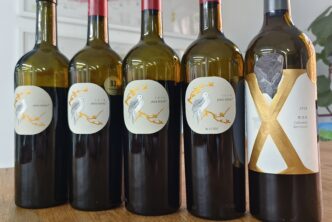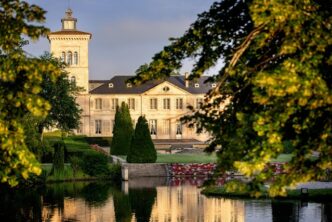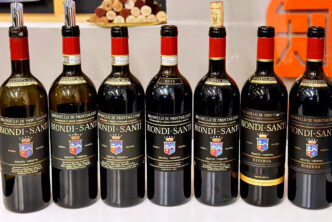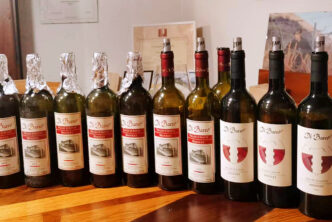Léon Beyer is one of the hallowed names in Alsace and world wine. This specific Beyer family (Beyer is not an uncommon name in Alsace) have been grape growers since the sixteenth century (1580), though the Léon Beyer firm as we know it today was founded only in 1867 by Emile Beyer. It was his son Léon, followed at the helm of the winery by his son also named Léon, both of whom were Mayors of the town of Eguisheim, the town where the winery building is located.
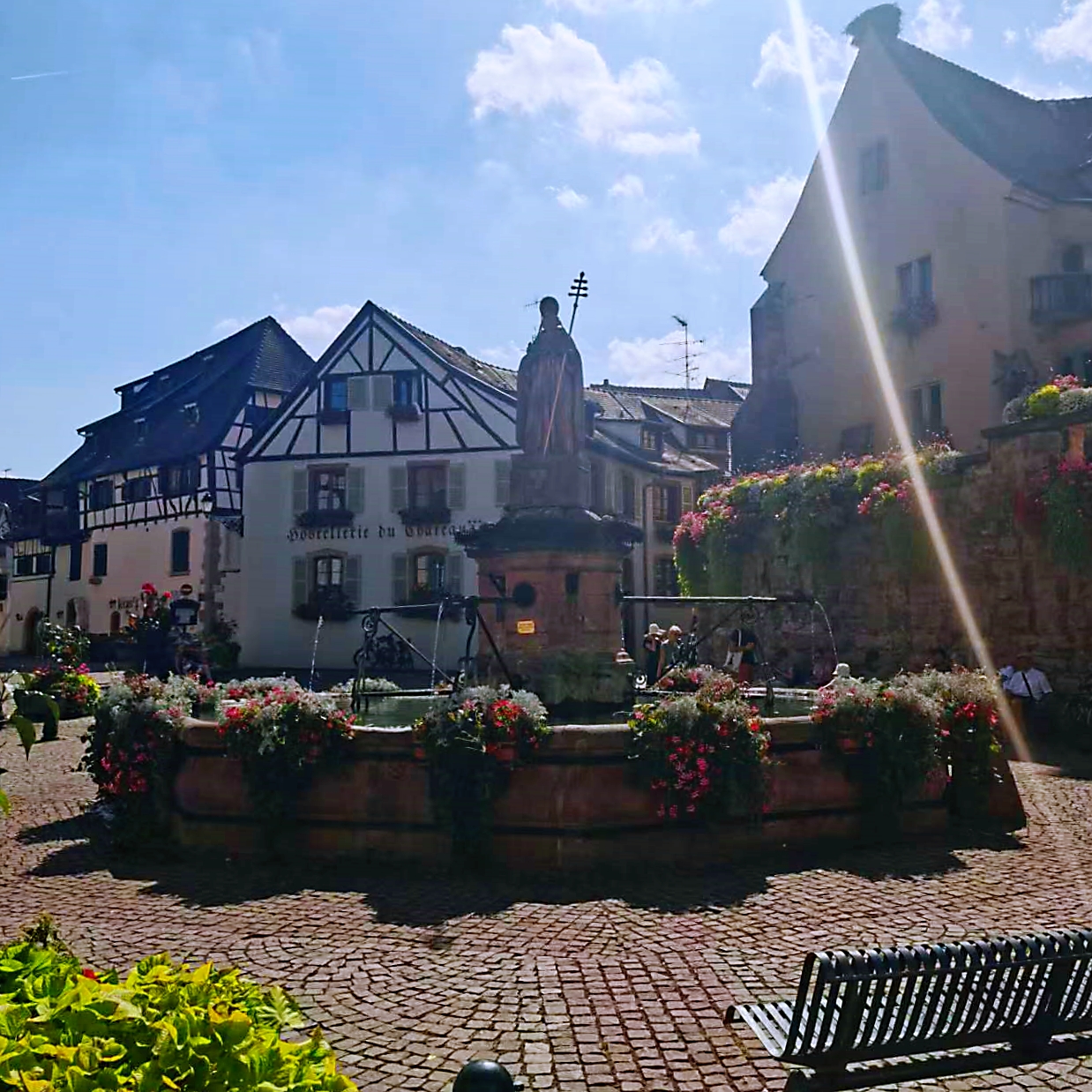
Eguisheim is one of France’s prettiest wine towns (voted one of France’s most beautiful 100 villages) and is literally overrun with tourists in the summer. More than many other well-known wine towns of France, Eguisheim boasts a truly long and distinguished history as a wine town, even counting a Pope among its most famous citizens. Bruno d’Eguisheim was elected Pope in 1049 under the name Léon IV. The town has also been always closely linked to the Counts of Eguisheim (the Comtes d’Eguisheim) and the Bishop of Strasbourg and was famous for its abundance of vineyards and fine wines as far back as the thirteenth century.
The Maison Léon Beyer was originally located in the centre of Eguisheim, but relocated at the end of World War I to a former post-house just outside the medieval village’s walls (though they still have a wine shop in the town center). Today the winery is run by the thirteenth generation of Beyers, Marc (the son of Léon the second) and Yann, the son of Marc, who represents the fourteenth generation of family.
The Maison Léon Beyer is both a domaine (that bottles wines made with estate-grown grapes) and négociant (from bought grapes). And while the estate-bottled wines are the most famous and sought after by collectors, Léon Beyer’s négociant wines are also very good, such as for example their delicious Sylvaner, one of Alsace’s best-buy wines. The range of wines produced each year is large, and they are divided into different sections of the portfolio, including for example the Les Classiques, Les Grandes Cuvées and the special Vendanges Tardives and Sélections de Grains Nobles wines that easily rank amongst the world’s greatest sweet wines. And even though the wines of the Les Grandes Cuvées line are made with grand cru grapes, there is no mention of any Grand Cru name anywhere on the Léon Beyer labels. This is because Léon Beyer, just like Trimbach and Hugel (who have since partly changed their minds) did not believe the Grand Crus were drawn up in a truly meaningful way, finding for example that most were far too large to truly express a specific grand cru’s characteristics (when you stop to think that the Schlossberg Grand Cru, for example, is a whopping 80 hectares large, you cannot help but agree that Léon Beyer has a very valid point).
The winery owns about twenty hectares of vines and and rents another fifty hectares roughly. Most importantly, Léon Beyer has vineyards in two Eguisheim Grands Crus, the Eichberg and Pfersigberg. The grapes from these two grand crus are used to make the Riesling wines of the Grandes Cuvées series of the winery’s portfolio. Those wines labeled under the Les Ecalliers and Comtes d’Eguisheim designations are made with grapes from the Pfersigberg, while the Riesling R de Beyer is made with Eichberg grapes. The Pfersigberg grand cru is 74.5 hectares large and faces mostly east/southeast. It has a mostly marly-clay soil with a conglomerate-like subsoil rich in limestone pebbles. The Eicheberg grand cru is, in my not so humble opinion, one of the best and at the same time most underrated grand crus of Alsace, one that knows very few rivals when it comes to Gewurztraminer but that gives excellent Riesling wines too. About 57.6 hectares large, it is located between 220-340 meters above sea level and faces mostly southeast, with a mostly limestone conglomerate and marl soil along with colluvium rich in sandstone and clay. It is one of the driest grand crus of Alsace.
At Léon Beyer they practice practice sustainable agriculture in the vineyard, and the grapes are hand-harvested. Their eco-sustainable practices have earned the winery the HVE or High Environmental Value certification. Last but not least, Léon Beyer has always been famous in France and internationally as a source of very gastronomic, food-friendly wines. Classically dry and fairly light on their feet, these are wines that have long been sought out by sybarites and gourmets everywhere. Already in the 1960s, Simon Arbellot, an editor known as the “French consul of the good life”, was talking up the quality of French white wines from Eguisheim, and specifically those of the young mayor and talented winemaker Léon Beyer. In was his well-documented belief that it was impossible to imagine a a seafood tasting or a surf and turf dinner without Beyer’s bottles on the table too. In fact, Léon Beyer’s wines are found today on a majority of three-star restaurant wine lists in France and abroad.
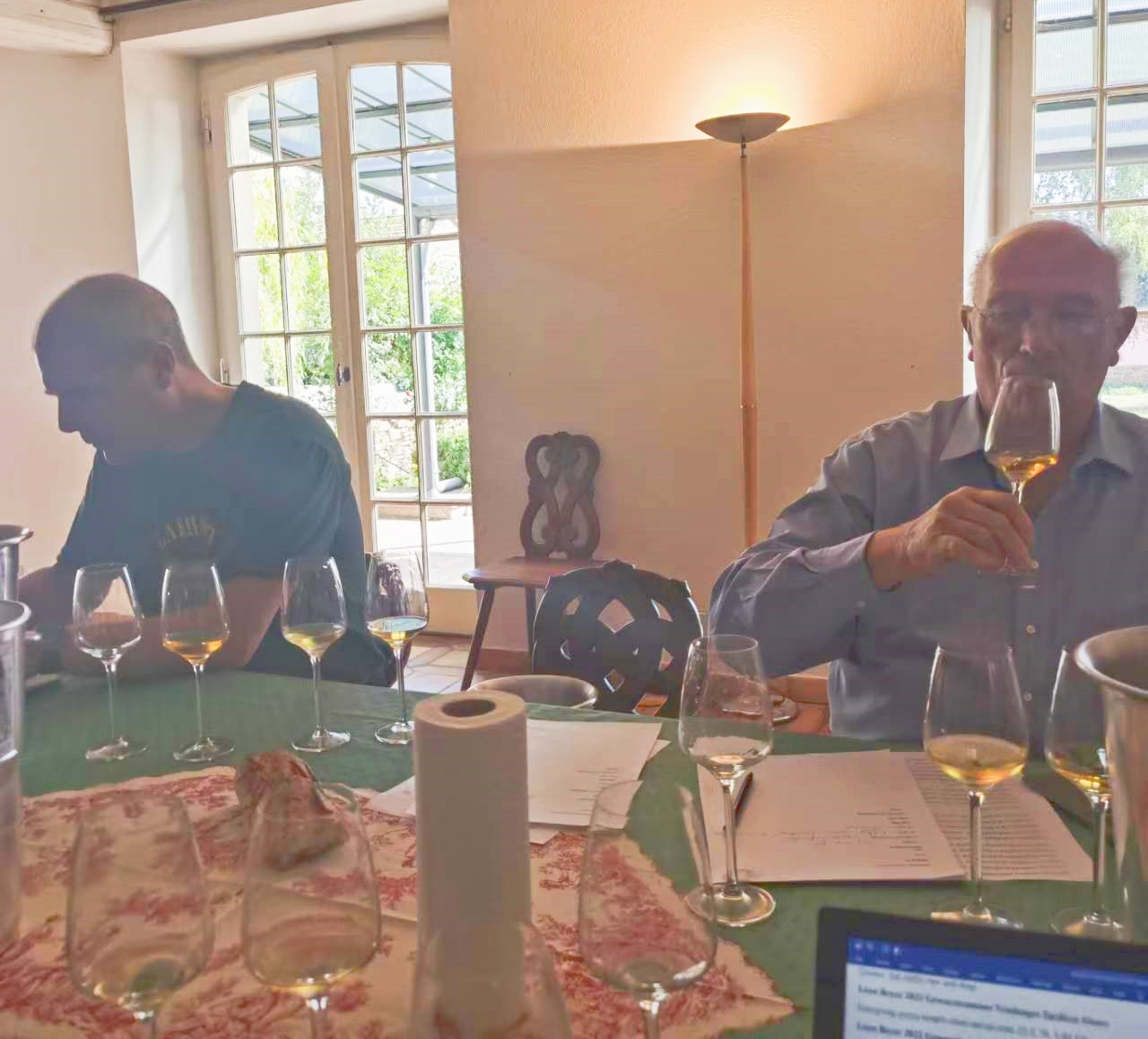
A tale of three Riesling wines
This tasting report features three top Riesling wines from Marc Beyer, the Riesling Les Ecaillers and Riesling Comtes d’Eguisheim (both made with grapes sourced from Pfersigberg grand cru) and the Riesling R de Beyer (from the Eichberg grand cru ). All are released for sale more or less six to eight years after the vintage, depending on the traits of the year’s growing season.
The Riesling Les Ecaillers is one of the truly classically dry Riesling wines of Alsace (and that isn’t always the case). The wine is always made with grapes from the Pfersigberg grand cru: it is characterized by noteworthy freshness and balanced acidity, and expresses its terroir’s minerality very precisely and cleanly. It’s also a very food-friendly wine, and it probably could not be otherwise given that the words that make up its name, les écaillers, translates in English to (oyster) “shuckers”. In fact, the Les Ecaillers wine has an interesting history in how it came to be: it was born when a food club asked the father of Marc Beyer to judge at an écailleurs contest (again, they are those who shuck oysters) that once over, was celebrated with a huge oyster eat-a-thon. This led Beyer to create a brand new Riesling wine just for the occasion, that was baptized “Les Ecaillers” as such by restaurant owners and patrons.
The Comtes d’Eguisheim bottlings can be some of the most memorable in all Alsace, especially the Gewurztraminer, which is one of the true world benchmarks for this wine. However, the Riesling Comtes d’Eguisheim is no slouch, and it ages magnificently well. Hailing from the limestone and marl typical of the Pfersigberg grand cru (see above for a more complete description), this is a wine that combines power with elegance and freshness like few others.
The grapes are hand-harvested and pressed, then ferment with indigenous yeasts in large oak barrels. Racking takes place prior to winter and the wine is bottled in the spring, then cellared for years, as mentioned previously. The wine is only made in the better vintages and only about 4,500 bottles/year are made on average (ranging from 3500 to 6000 bottles a year).
The Riesling R de Beyer, where R stands for “rare”, and is the only Riesling in this trio to be made with grapes grown in the Eichberg grand cru. The Eichberg gives a much more powerful, structured and almost opulent wine than those of the Pfersigberg, but one that is also marked by noteworthy refinement and aging capacity. As the wine ages it develops a very obvious honeyed note.
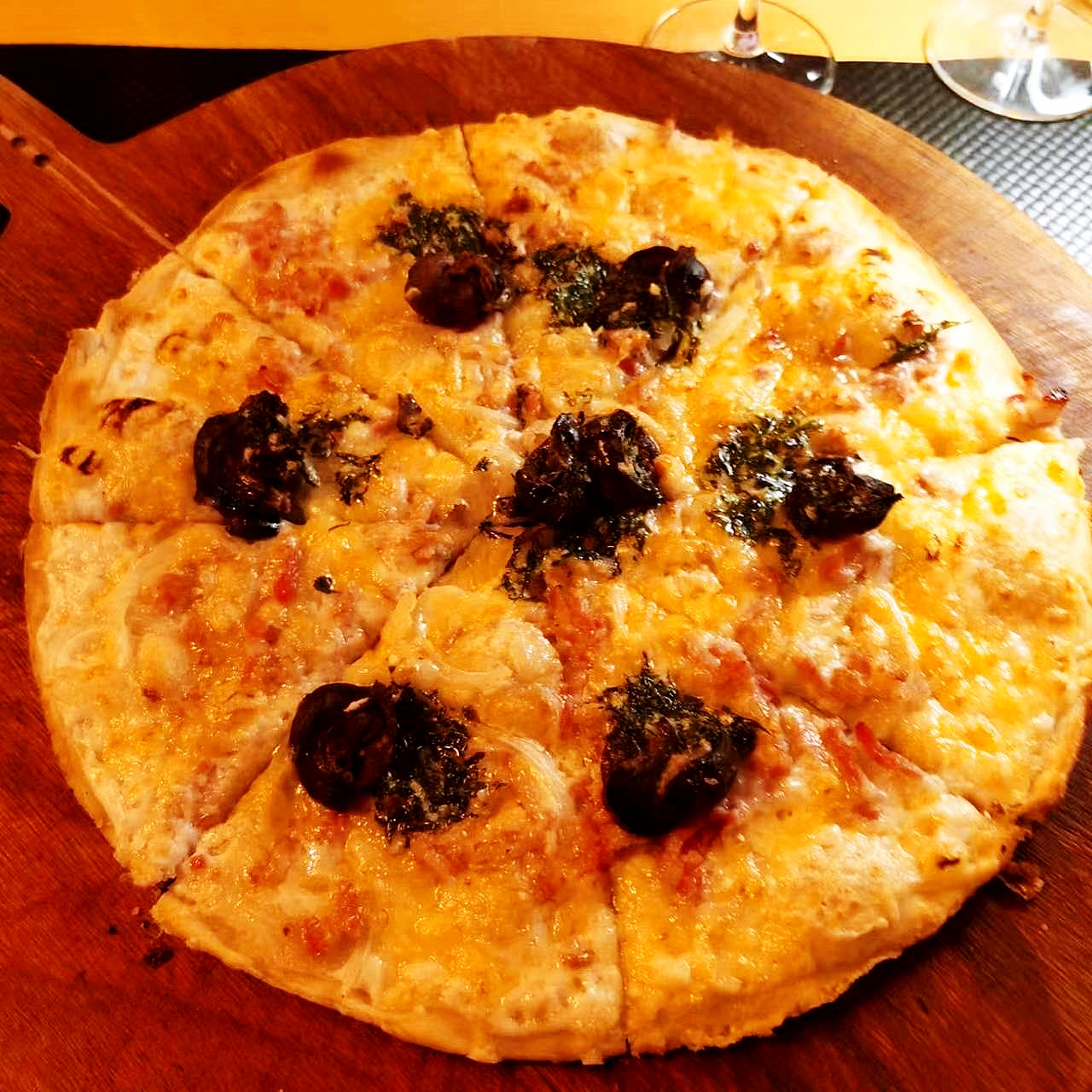
The vintages in this tasting report
The 2022 vintage in Alsace turned out to have one of the hottest summers on record (such that water stress was quite the problem in some vineyards), preceded by a warmer than usual winter and spring. However rain fell abundantly enough in April and at the start of September to ensure the vintage will be remembered as a very good to excellent one. Sylvaner performed especially well in this year and so did some Riesling and some Pinot Noir (though 2022 was almost too dry for Riesling and too hot for Pinot Noir). It’s fair to say the 2021 vintage will not go down in history or memory as a good vintage. The combo of spring frosts and rain through much of the late spring and summer caused untold disease pressure havoc and greatly reduced yields (ranging from 10 to 90% of a winery’s crop). What saved the year was the dry and warm autumn, allowing for some good dry wines to be made (very little to no late harvest or sweet wines were made). Riesling fared best, but that’s a left-handed complement in this vintage. Much better proved to be the 2020 vintage, a carbon copy in some respects of the 2019 vintage but characterized by an even earlier harvest and an even warmer growing season. In fact, the 2020 growing season weather was almost too much of a good thing, with a very warm but parched summer, meaning that water stress was everywhere, with young vines suffering greatly (and in Alsace, thanks to a non-sensical law that penalizes heavily grape varieties such as Sylvaner and Pinot Blanc, there are plenty of young vines all the time, given that not-so-illuminated growers uproot the former in favour of yet more Riesling and Pinot Gris and in so doing further increasing the volume of poor to very poor wines being nowadays being made with those two grapes in the region). Given the heat, it’s not surprising the grape that probably fared best in 2019 was Pinot Noir. Over the last few years there’s quite something to say about the Alsace wines being made with this finicky grape.
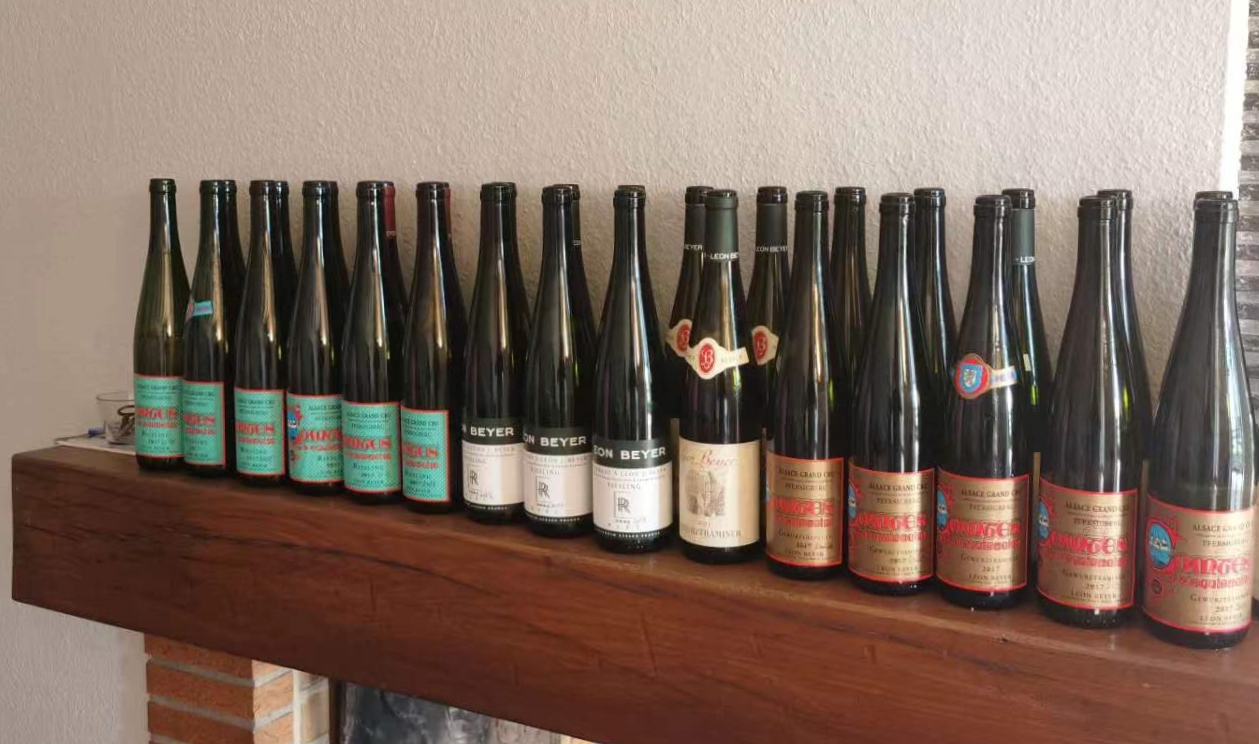
The wines in this tasting report
All the wines in this tasting report were tasted by me directly at the winery in Eguisheim in the presence of Marc and Yann Beyer. I caution that as all these wines are released several years after the vintage, they may not yet be released as such; this is especially true of the Comtes d’Eguisheim bottlings, that Beyer will often declassify if it is felt the wines aren’t progressing and evolving as they would like.
Léon Beyer 2022 Riesling Les Ecaillers Grand Cru Pfersigberg Alsace 95
Pale, green-tinged color. Apple, plum, peach and fresh white flowers on the nose, with a hint of exotic crystallized peach. Juicy, tight and quite primary, with a penetrating, citrussy quality to the flavors of ginger and lemony orchard fruit. This pretty wine is very clean, fresh and precise, finishing long, minty and with excellent density. You can tell there’s limestone in the soil these vines grow in. This 2022 will go on sale many years from now, as the winery is currently selling the 2015 and the 2017, but it’s an exciting wine in the making. Les écaillers translates in English to (oyster) “shuckers”, and I can vouch that this Riesling will match beautifully with oysters and shellfish of all kinds. Drinking window: 2028-2036.
Léon Beyer 2022 Riesling Comtes d’Eguisheim Grand Cru Pfersigberg Alsace 95+
Very nice! Gorgeous bright, pale, straw yellow colour. Deep aromas of yellow and green apple, pear, jasmine, iron shavings and minerals. Then lemony lime flavours are savoury and thick but lifted, and nicely extended by harmonious acidity on the rising iodine-accented finish. This wine is usually harvested a few days later than the Les Ecaillers, but the main difference is the type of the soil because even though the grapes come from the same grand cru (the Pfersigberg), the area from where the grapes for the Comtes d’Eguisheim come from is characterized more by its brown stones and calcic qualities. I normally much prefer this wine to the Les Ecaillers, but in 2022 I’d say they’re about on the same level, though this is the one that will age better. Drinking window: 2027-2038.
Léon Beyer 2022 Riesling R de BeyeR Grand Cru Eichberg Alsace 96+
Deep straw yellow with a mild green tinge. Complex nose combines lime blossom, quinine, fennel and medicinal herbs; I find the fennel/licorice note to be fairly typical of Riesling wines from the Eicheberg. In the mouth, this boasts the glyceral richness and hint of sweetness that are also typical of the Eichberg’s wines, but with ripe, harmonious acidity augmenting the intensity and breadth of the citrus and floral flavours. Despite the admittedly very warm, even hot growing season, the long finish offers terrific cut and aromatic character. This strikes me as deeper colour than some other wines of Beyer’s, but it is not necessarily so every year (so I caution readers from coming away thinking that it’s the Eichberg giving deeper coloured wines, because that is not the case). Very big and powerful, this Riesling wine finishes long and saline. Lovely wine. As I have written many times before (and also above in this report, the Eichberg boasts heavier soil that tends to give more tannic and opulent Riesling wines. Drinking window: 2028-2039.
Léon Beyer 2021 Riesling Les Ecaillers Grand Cru Pfersigberg Alsace 91+
Vivid straw-green. Reticent aromas of forest floor, violet, lavender and jasmine have a stony undertone. Chamomile and herbal nuances dominate on the palate, with fruit flavours currently taking a step back. More closed and less showy than the 2022 as you’d expect given the 2021 vintage’s characteristics, this really needs time to develop in a good cellar. Beyer won’t be releasing this for sale anytime soon, so it will get all the time it needs to do just that. Drinking window: 2028-2036.
Léon Beyer 2021 Riesling Comtes d’Eguisheim Grand Cru Pfersigberg Alsace (90)
Medium vivid straw colour. Spicy, rather evolved aromas of yellow fruit, herbs and earthtones. Then ripe and medium-bodied with more herbal and underbrush. On both the nose and in the mouth, this strikes me as being somewhat fruit-challenged. Not too faceted, but nicely savoury on the medium-long finish. I’m not sure this is good enough to be labeled a “Comtes d’Eguisheim” wine, but clearly, given how long before this wine will be released for sale, they have still plenty of time ahead at Beyer to make that call. This is why I have this particular wine’s score in brackets. Drinking window: 2027-2034.
Léon Beyer 2020 Riesling Les Ecaillers Grand Cru Pfersigberg Alsace 93
Luminous straw-green. Ripe but refined aromas of peach, orange, apple and diesel fuel. Round, rich and deep, and boasting excellent length, this will be ready sooner but will still age well. Very precise and clean. Very successful les Ecaillers. Drinking window: 2025-2034.
Léon Beyer 2020 Riesling Comtes d’Eguisheim Grand Cru Pfersigberg Alsace 95+
Straw-green. Diesel fuel, chamomile, bergamot and lime on the very elegant nose. Then also very refined and well-balanced in the mouth with flavours that are quite similar to the aromas. The long precise finish is silky yet vibrant. Very promising Comtes, despite the hot vintage season. Drinking window: 2026-2034.
Léon Beyer 2020 Riesling R de Beyer Grand Cru Eichberg Alsace 95
Good full straw-green. Chamomile, peach, orange oil, almond and a hint of lemon verbena on the promising if slightly youthfully reticent nose. Then also shut down and quite tannic in the mouth, with hints of peach and chamomile flavours. This finishes long but not as explosively or as fruity as the 2020 Pfersigberg, but that’s to be expected with Eichberg wines. Give this plenty of time in your cellar, but it ought to develop splendidly. The grapes for this bottling come from the lieu-dit Eich, that Beyer had to replant, for various reasons, three different times (despite its grapes gave some of the estate’s best Gewurz wines). This is why the first R de Beyer is from 2000. Drinking window: 2027-2036.

 中文
中文
